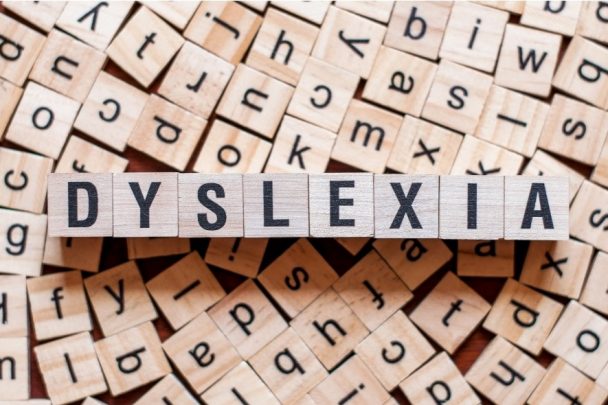Introduction to dyslexia difficulties
The constant battle between comprehension and note taking
It is important to be aware that for students with dyslexia lesson time can be a constant battle between comprehension and note-taking. Students must listen to instructions to learn and check their own understanding, whilst notes are important as dyslexics normally need to go over information several times to retain what they have learned. If students cannot actively participate during class, they are not able to ask questions. However, if they do not have sufficient notes, they are unable to revise and can quickly forget the information that they have understood.
Why do students with dyslexia find themselves in this situation?

Students with dyslexia often have difficulty listening and writing simultaneously. When listening to an explanation they could potentially have a level of comprehension just like anyone else. However, the moment that they start writing their ability to process any further information reduces drastically. To tackle this, try printing off any information that is crucial for the students to retain. This way they are free to listen to and process the information that they are hearing and can query any points that they are unsure of. In other words, they can be active participants during the lesson and do not have to worry about writing everything down that they will need to know at a later date. Try to give your students any handouts when the teacher explanation section is finished so that do actively engage and do not simply rely on what you have given them.
In situations where it is important for your students to take some active notes, try providing them with a handout with questions to answer concerning the key points that you would like them to learn. This way students do not feel like they need to copy down everything that they hear, something that they will unlikely be able to do, but instead, feel safe in the knowledge that they have all of the revision notes that they will need.
If you are listening to pre-recorded information attempt to provide a transcript and ask your students to highlight key information. Challenge them to highlight no more than ten points so that they are selective and do not simply highlight everything. If you can, play the recording three times. The first time ask your students to listen without writing anything down, then give two further attempts for them to highlight, process, and consolidate the information that they have heard.
Finally, and importantly, do not assume that a lack of note-taking during lesson time is a sign of laziness.
Avoid obsessing with Spelling and grammar (SPAG) corrections

It is likely that students with dyslexia will have a lower level of spelling and grammar (SPAG) than the average student. Avoid obsessing over this. There are certainly times when spelling and grammar are important, however, they are rarely more important than the content of a piece of work. The over-emphasis of accuracy regarding SPAG risks damaging a student’s confidence in their ability to express their ideas and will likely be unproductive.
When to pick up on SPAG errors?
If you identify that a student is repetitively making the same mistake, discuss this with them so that they can identify and rectify the error. It is important to note that, especially where it regards spelling, dyslexics are often criticized for “not proofreading” their work. Avoid this, as students are generally unable to identify their own errors and therefore cannot rectify them without help. In fact, they may have reread their work multiple times before submitting it. It goes without saying that identifying errors should give the student an opportunity to develop and not the teacher an opportunity to shame or embarrass.
Students will likely appreciate it if you help them identify the misspelling of a word that is central to an argument, however, will be disheartened if a comment is made regarding every error. As nowadays most “real life” writing goes through a computer, with a spell check feature, emphasize the content of students’ work and not their SPAG. However, do watch out for students using spell check and choosing the wrong correction- for example, boarder vs border.
Provide lesson recordings

If you are able to, recording lessons is a fantastic tool! This may be one of the few advantages of the digital classroom that we have been forced to use over the past 18 months. One form of dyslexia mainly inhibits a person’s ability to acquire information quickly i.e., the student is just as capable in their ability to understand a given concept, they simply need more time to reach the same level of comprehension.
If a recording is provided, then the student can listen to an explanation as many times as they need to. Additionally, if students wish to make personalized notes, it is much easier with a recording as they can pause the information to write and therefore do not miss any further teaching. One thing to keep an eye out for when students do this is how long they are taking to write something up. For example, conscientious students could spend 3 hours writing up a 1-hour lesson.
Be careful when asking questions to dyslexic students
As previously stated, it can take a little longer for dyslexic students to grasp concepts so be mindful of asking them questions shortly after explaining something new. An intelligent student could be made to feel embarrassed that they are unable to answer a question simply because they have not had time to process what they have heard.
As checking on student’s comprehension is extremely important for teachers, try asking questions to students with dyslexia during a review at the beginning of the following lesson. This way the student has had time to understand what they have heard and complete any homework to solidify their knowledge. Create a situation for your students to demonstrate their knowledge instead of being disheartened if they cannot respond to a question straight away.
- If you are intersted in this topic, have a look to our article on how to Use Questions Effectively in Teaching and Presenting
Allow extra time (25% or more)

Where possible try and give your students a little more time when completing tasks. As a general rule 25% extra time is a good starting point. This again allows your students to showcase their skills instead of being inhibited simply due to lack of time.
Give clear instructions
As it is difficult for some dyslexics to retain information quickly, especially lists, make sure clear instructions are given to avoid confusion. Write down exactly what you want your students to do on the board or include instructions on any handouts.
Provide alternatives (reading lists)
Students with dyslexia often get tired quickly when reading or their reading pace is slower than average. For courses where there is a reading list think of providing a second condensed version.
Talk to your students

Dyslexia can present itself in so many different ways, so talk to your students! Ask them how you can provide support and create a personalized learning plan together as students are often very good at finding their own techniques to succeed. Be aware of not forcing learning methods onto students as not everything works for everyone.
Do not underestimate students with dyslexia

Additionally, do not underestimate students with dyslexia. Many dyslexic students can achieve top results and deserve praise to achieve the academic success they have often had to put in many more hours than the average student and must be extremely organized and determined.
Do not allow students to use their dyslexia as an excuse
This being said, do not allow students to use their dyslexia as an excuse, make sure they are aware that although some things may be more challenging for them, good results are possible.
If you have confidence in them, they will have confidence in themselves.
If would like to learn more about how to teach students with dyslexia check out the course we have recently developed!


Very good blog on Teaching Students With Dyslexia. Thank you for sharing such good tips.
Very good write up. Have learnt a lot
Thanks! We are glad you have liked it =)
25 percent extra time is a good idea. True that their comprehension levels are good but processing would take time
Thank you so much for this article.
I’ve hired someone that I think may be dyslexic (whether she knows it or not), and I’ve been getting desperate for encouraging ways to help her comprehend/complete her training.
I was diagnosed in 3rd grade with dyslexia and it affected me in all aspects (spelling, slow processing, copying notes, finishing tests on time, reading comprehention, math, etc). I remember always being told that I shouldn’t have words misspelled because there was auto corect. However, what many teachers didn’t realize is that even with auto corect and/or a spelling dictionary, it didn’t help me at all if I couldn’t understand or remember the context inwhich it was to be used. For example, which vs. withch, meet vs. meat, board vs. bored, angel vs. angle, etc. They would mark it wrong, but never explained why or acknowledge the quality of my work all together.
Spelling became a huge issue altogether and my parents weren’t happy that I kept failing tests/quizes when I would give the right answer but was being marked down for spelling errors. In 5th grade, we had to memorize the 50 states, where they were located on the map, their abreviation, their capital and have correct spelling. My parents sat down with my IEP case manager and 5th grade to discuss what was most important for me to focus on, and they decided I wouldn’t be graded on spelling because the other parts were more important. It really boosted my confidence when I kept getting 100% on each quiz I got back. In addition, my teacher would comment on how much my spelling of the states and capitals improved each time (mississippi was a huge one for me).
Same thing happened in 8th grade when we had to remember the preamble and spell everything correctly with correct punctuation. My 8th grade teacher talked with my parents and said to just focus on memorizing it and not to worry about spelling or punctuation. However, every time we would add on to it, my spelling and punctuation was on point by the final test.
Obviously as I got older, spelling became more of a priority, but it’s still a struggle for me. At work when I have to write incident reports for parents, I’m very self conscious about my spelling that I forget how to spell words I already know. Sometimes I just want to write “sorry for spelling errors, I’m dyslexic.” I don’t want to use it as an excuse for my bad spelling, my parents never let me use dyslexia as excuse, but more as an explanation as to why their child’s teacher misspelled things.